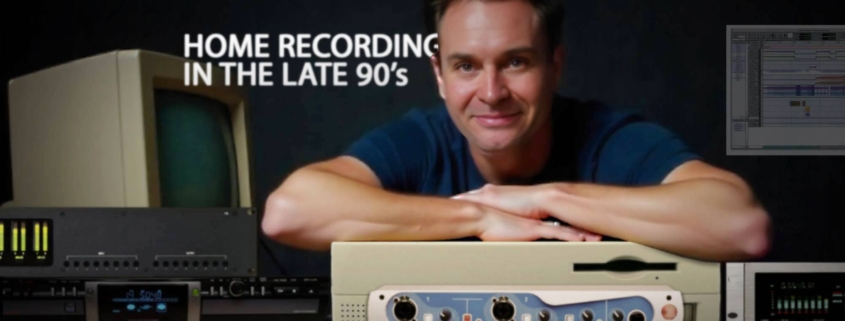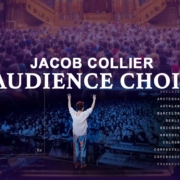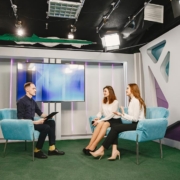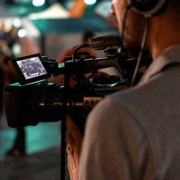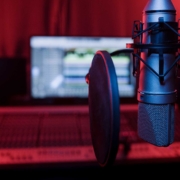The Digital Audio Revolution of the Late 90’s and the Launch of TravSonic Studios
articles, audio engineering, audio production, blog, history, pro toolsThe shift to digital recording in the late 1990s and early 2000s completely transformed the audio production industry. The rise of more affordable and common personal computers, fueled by tech advancements and the dot-com boom, led to the replacement of old-school tape machines with Digital Audio Workstations (DAWs).
This is the story of TravSonic founder Aaron R. Reppert, and how he built his career and business by embracing the digital revolution for audio production.
College and The Start of an Audio Career
In 2000, Aaron Reppert, a student at San Francisco State College of Extended Learning (now known as the College of Professional & Global Education – CPaGE), enrolled in the digital audio course. This experience was a turning point, introducing him to the field of digital audio and marking a significant departure from his initial work with a vintage reel-to-reel machine at his home studio.
Reppert was also seeking a comprehensive multimedia production course, but the university didn’t offer one. So, he proposed designing his own curriculum. The university accepted his proposal, and the course he developed—“Digital Design and Production”—was created. By 2002, it had become SFSU’s most popular multimedia course.
Mr. Reppert, now enrolled in the course he helped create, took full advantage of a rare opportunity: full access to San Francisco State University’s audio lab. The lab featured a Pro Tools 5 TDM system, which was cutting-edge technology and a rarity on a college campus at the time. He devoted countless hours to learning professional recording and exploring the equipment’s endless creative potential. After spending his days in the lab, he would attend night classes.
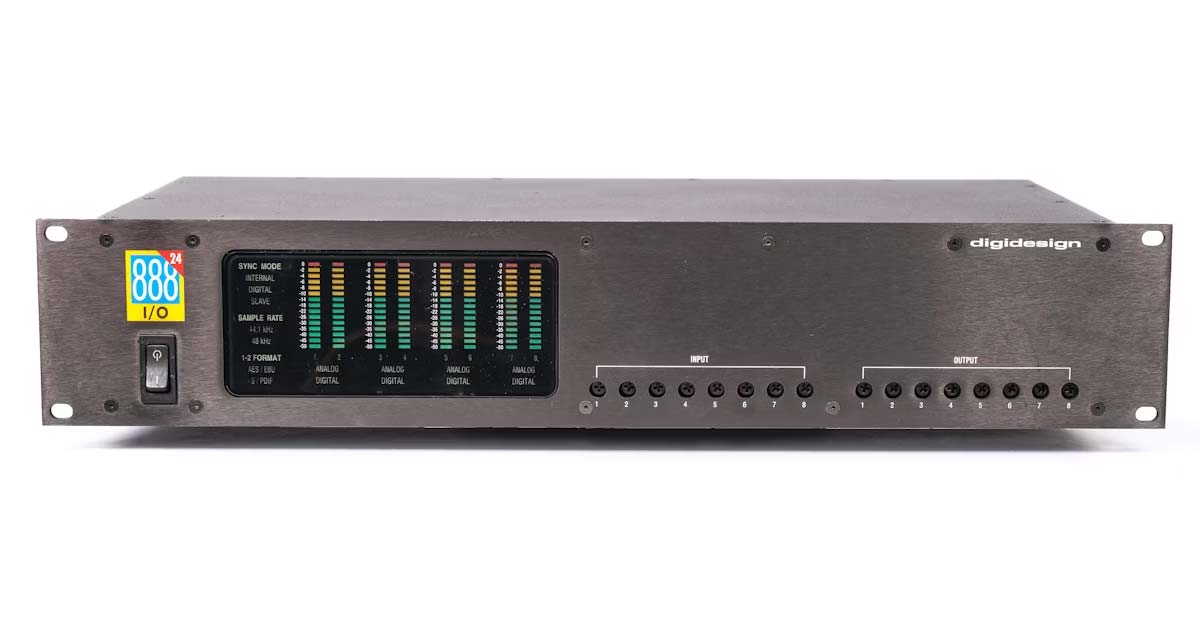
Image: Pro Tools TDM 888 Interface
The Pro Tools 5 TDM was an impressive system of its time. It could handle up to 128 audio tracks and 32 simultaneous inputs and outputs by stacking four 888 i/o interfaces. But this kind of power came with an equally impressive price tag, starting around $10,000 and easily climbing to over $50,000. This made it an exclusive tool for large, professional studios, completely out of reach for the average person. Aaron knew he had to take advantage of the opportunity to learn from it as much as he could, since it was untouchable for most.
The Digidesign Digi001 Changes Everything
Digidesign (now Avid) released the Digi001 in 1999, an 8-channel audio interface that brought professional recording out of the studio and into the home. At a starting price of $1,995, it was still a significant investment (about $4,000 in today’s money), but it was a fraction of the cost of a TDM system. This was the first time an all-in-one professional recording solution was accessible to the home user for Pro Tools, and it was a huge deal.

Image: Digidesign Digi001 audio interface
A Professional Studio on a Budget: My First Pro Tools Rig
The Digi001 system, which came with a special version of Pro Tools LE software, included a PCI card and an 8-channel breakout box with analog inputs and outputs. It was built to bring pro-level tools to the budding project-studio market.
Before its release, many home studios relied on standalone ADAT recorders, which made non-linear editing and manipulation of audio much more difficult. The Digi001 completely changed the game, providing a powerful and flexible recording and editing solution that had previously been out of reach for many.
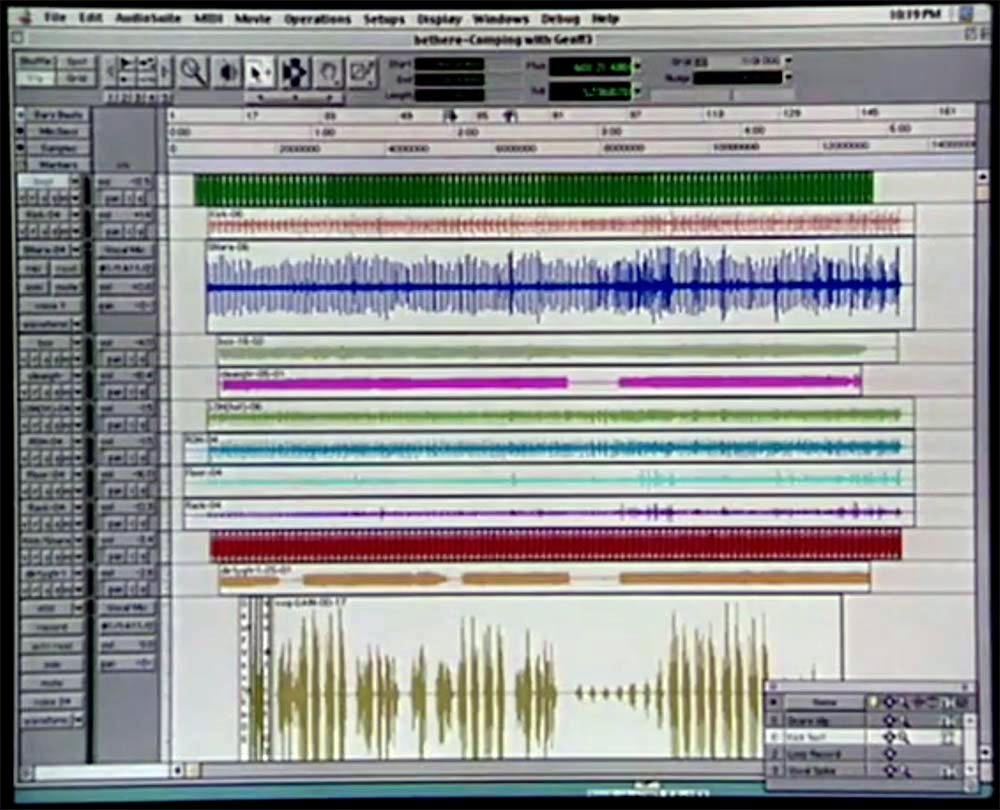
Screenshot of Pro Tools LE edit screen from the Digi001 DVD promo in 1999.
Pro Tools LE and Its Versatility
Sessions created in Pro Tools LE (Light Edition) were largely compatible with Pro Tools TDM, meaning a user could record on an LE system and then open the session in a professional TDM studio for mixing, which was a major selling point.
Having already mastered the ins and outs of Pro Tools in college, Mr. Reppert knew he had to get his hands on a Digi001 to start his own audio production business. The challenge wasn’t just the interface; a capable computer was also needed. A Power Mac G3 desktop was the ideal machine, costing between $2,919 and $4,969. Altogether, the setup could easily cost $4,000, or roughly $8,000 in today’s dollars.
Aaron was determined to get into audio production. He secured a bank loan, purchased a used Power Mac G3 from eBay, and ordered the brand-new Digi001 from Sweetwater.
With this equipment, he converted a room in his house into a modest studio. At the time, he couldn’t have known that this one small step would pave the way for his entire career.
Early Digital Recording: The CPU Revolution

Apple Power Macintosh G3 233 MHz Desktop Computer
The computers of the late 1990s and early 2000s were much slower than they are today. Aaron’s computer, a Power Mac G3, had a 233 MHz PowerPC 750 (G3) processor that cost about $1500 and 32 MB of PC66 SDRAM. For storage, it was equipped with a 4.0 GB IDE hard disk drive and a 24x CD-ROM drive. The operating system was Mac OS 8.0. Today’s computers are thousands of times more powerful. However, at the time, this was a cutting-edge machine, a revolutionary tool that felt like pure magic. For Aaron, this computer wasn’t just a new piece of technology; it was the start of a lifelong career in audio production.
The Cost of Hard Drives in the early 2000s
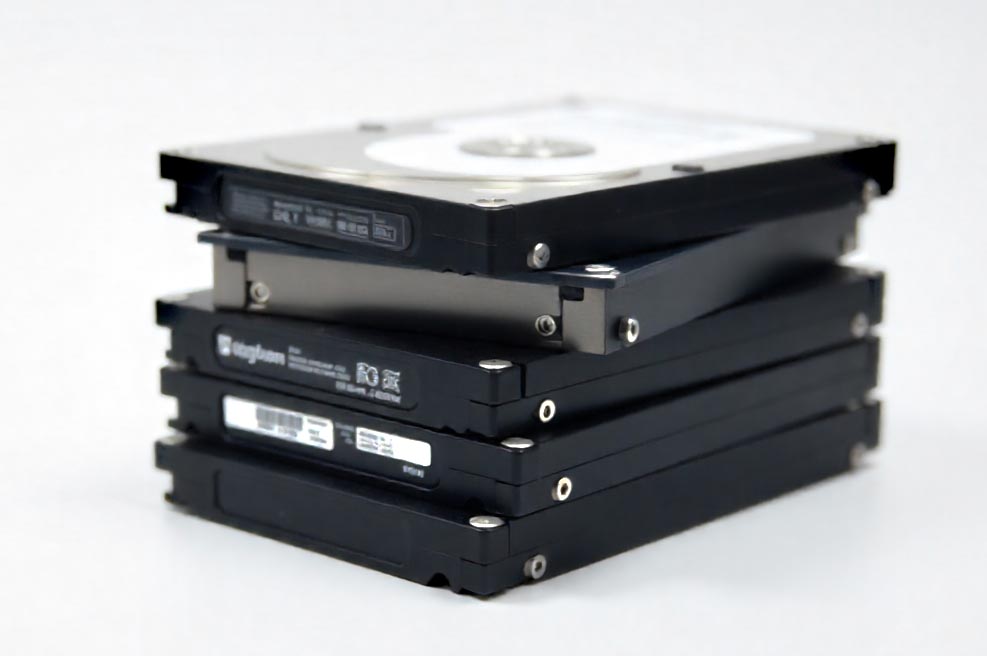
A stack of old IDE hard drives from the 2000s.
Hard drives were a significant investment in the early 2000s, costing around $12+ per gigabyte (GB). Today, the cost is a fraction of that, at about $0.014 per gigabyte. For instance, a 20GB hard drive that would have cost roughly $240 in 2000 was a huge expense, especially for tasks like audio and video editing that required substantial storage space.
The Art of Track Bouncing: Navigating Early Digital Audio Limitations
A 233 MHz processor had its limitations. Pro Tools LE could only handle about 10 to 16 tracks with a few audio plugins before the computer reached its limit. This constraint forced a time-consuming but effective workaround: bouncing tracks.
To get around this, engineers used a technique called bouncing. They would combine several tracks into one new track. This freed up processing power so they could keep working. It was a clever workaround for the CPU limits.
Compared to its counterpart, analog tape, this new process was a revelation. While it had its own limitations and wasn’t perfect, the quality and flexibility that could be achieved were groundbreaking. It unlocked a new level of creativity, including the freedom to experiment endlessly and revert to previous versions.
Software and Plugin Licensing with a Floppy Disk

Digidesign Pro Tools authorization floppy disk in the late 90s
The Mac G3 computers featured a floppy disk drive that served a crucial purpose: authorizing software. Back then, software like Pro Tools and its plug-ins required you to insert a specific floppy disk to access your license. This method was the precursor to modern licensing systems like the iLok, where a physical USB device holds and manages your software licenses. The floppy disk worked the same way—you could manage software access by simply inserting or removing the disk.
Today, most software licenses are managed through online subscriptions, which allows for a more streamlined and flexible authorization process.
Giving Back with Media and Audio Production
When Aaron graduated from college in 2002, he wanted to use his skills in media and audio production to help his community. He started by volunteering for Habitat for Humanity Greater San Francisco, providing video and photography services for their house construction projects.
Mr. Reppert also mentored young adults, teaching the fundamentals of audio production at schools and youth centers like the Boys & Girls Club. His commitment to this work led to a new opportunity: he was hired to develop and build recording studios specifically for these youth centers.
The Birth of TravSonic Mobile Recording
As a freelance audio engineer in the San Francisco Bay Area, Aaron Reppert spent years recording indie bands. In 2005, he spotted a new opportunity: live concert recording. He wanted to help artists capture their shows without breaking the bank, so he built a mobile rig. The first version was a makeshift Alesis HD24 Hard Disk Recorder setup inside a massive, wheeled audio rack. He later upgraded the rig to Pro Tools HD with three 192 interfaces powered by a Mac Pro. While it got the job done, the rig was a beast to move, lugging it in and out of every venue.
Building a Mobile Recording Studio
Aaron knew there had to be a better way. The solution came in the form of a dedicated mobile recording truck. He pictured a studio built directly into a vehicle, with only a single audio snake running into the venue. He chose a Ford Econoline E-150 van—smaller and more affordable than a full-sized truck—and in 2007, he bought it, repainted it, and gutted the interior. He then built custom shockproof racks and a desk to hold a 24-channel mixer, transforming the van into a fully functional Pro Tools studio on wheels.
The new TravSonic Mobile Recording rig was a game-changer. Aaron and his team started traveling all over the Bay Area, recording concerts, church services, and a wide variety of events. Word of the unique mobile studio spread fast, earning them gigs all the way down in Los Angeles and proving the high demand for their service.
Bookings skyrocketed. One of the first major projects was the “El Chicano Reunion Concert” in May 2008, and soon after, they were securing corporate gigs with major companies like Hewlett-Packard. This early success solidified TravSonic’s reputation for delivering professional, budget-friendly audio production across the Bay Area.
The Launch of TravSonic Studios
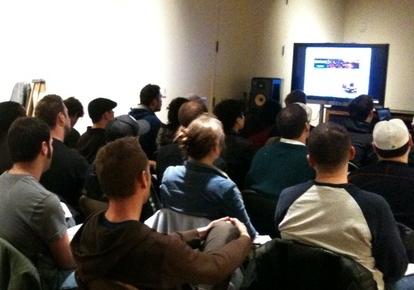
2010: Aaron Reppert assists with an audio mastering workshop at Trilogy Studios in San Francisco, CA.
In 2008, Aaron Reppert opened his first professional recording studio in San Francisco’s SoMa district, specializing in voice-over and mixing for corporate clients. The studio’s use of digital audio technology, combined with a strategic partnership with local CD duplication company Mixonic, created a full-service operation. This success fueled the business’s expansion to a second location at Studio D at Hyde Street Studios, where it began accommodating larger-scale audio productions and band recordings.
A Journey into Audio Post-Production
In 2018, TravSonic expanded its facilities to include ADR recording, a move that enabled it to connect with studios worldwide using Source-Connect. This technological leap quickly paid off when TravSonic was brought on to record remote ADR for the opening scene of Disney’s Frozen II, specifically for the character of Young Elsa, voiced by Mattea Conforti.
This successful collaboration solidified TravSonic’s reputation in the industry. The company went on to work with major players like Netflix, Apple Studios, MGM, and 2K Games, and was approved as a vendor for Amazon MGM Studios after a rigorous vetting process.
Recognizing the evolving needs of the industry, TravSonic’s founder, Aaron, took a new direction in 2020. He revamped the company website to focus on online audio post-production. The new site featured real-time custom estimates and dedicated customer service, effectively transforming TravSonic into an e-commerce business. This strategic shift led to a 50% increase in both production and revenue, propelling the company into the digital age and expanding its global reach to serve film producers, companies, authors, and artists everywhere.
TravSonic’s evolution from a specialized studio in San Francisco’s SoMa district to larger facilities highlights Aaron’s forward-thinking approach. By leveraging digital technology and forming key partnerships, he successfully scaled his business to meet the diverse demands of both corporate and music clients, solidifying his reputation as a versatile and innovative professional in the audio industry.

